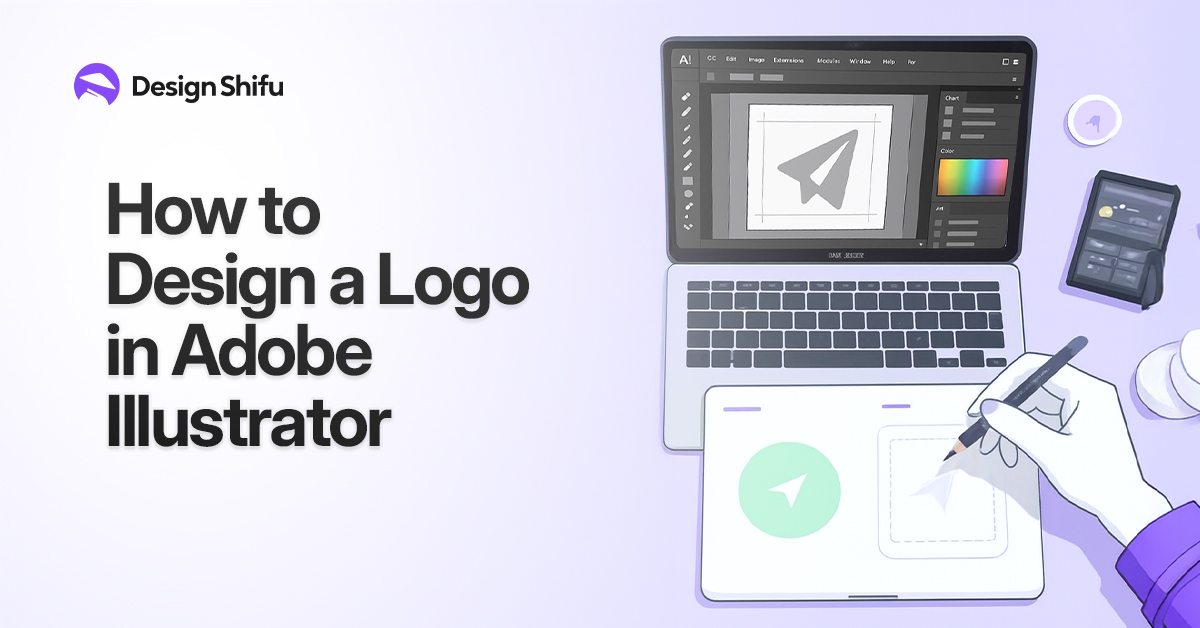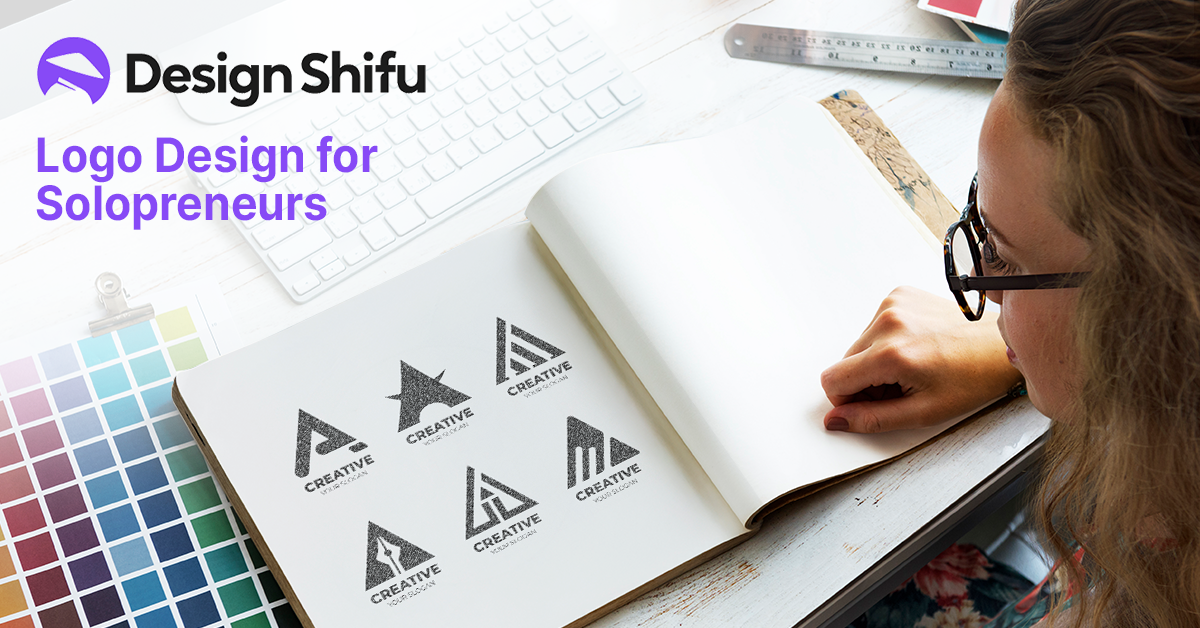The Hidden Crisis- Why 68% of Brands Fail at Logo Consistency. Creative Operations professionals are uniquely positioned to solve branding’s biggest challenge: logo chaos.
While designers focus on aesthetics, Creative Ops teams see the bigger picture scalability, compliance, workflow efficiency, and measurable ROI.
The shocking truth? Companies lose up to 20% in brand recognition due to inconsistent logo usage across channels (Lucidpress, 2024).
TL;DR
This guide reveals
- Why Creative Ops should own logo design workflows (not just approve them)
- The 4-step playbook top brands use (Netflix, Airbnb case studies included)
- Essential tools and tech stack for scalable logo systems
- Free checklist: Logo governance for enterprise teams
Why Creative Ops Must Lead Logo Design
The Brand Consistency Crisis
Traditional logo design fails because it’s not designed for operations. Marketing teams create variants, agencies deliver incomplete packages, and freelancers work in silos.
The Creative Ops advantage
- Systematic thinking: You understand workflows, approval processes, and scalability requirements
- Cross-functional perspective: You see how logos impact every department and touchpoint
- Quality control mindset: You prevent expensive mistakes before they happen
- Measurable focus: You track ROI and business impact, not just creative awards
To ensure cohesive visual storytelling across channels, refer to structured brand guidelines design for marketing consultants
The Real Problems Creative Ops Solve
Problem 1: The Scalability Nightmare Startups scale fast, but their logos don’t. Result? Pixelated favicons, broken mobile versions, and embarrassing social media profiles.
Creative Ops Solution: Design modular logo systems from day one primary marks, simplified versions, responsive variants, and application-specific adaptations.
Problem 2: The Localization Chaos
Global brands need 50+ logo variations for different languages, cultural contexts, and regional requirements.
Creative Ops Solution: Automated template systems using tools like Figma with AI-powered localization workflows.
The Creative Ops Logo Design Playbook
Strategic Foundation & Audit
Before any creative work begins, establish your strategic framework:
Brand Strategy Alignment
- Define brand positioning and personality
- Identify target audience visual preferences
- Analyze competitor landscape for differentiation opportunities
Current State Audit
- File formats: SVG, EPS, PNG availability and quality
- Color compliance: Pantone, HEX, RGB specifications
- Usage guidelines: Minimum sizes, clear space requirements
- Application gaps: Missing responsive or specialized versions
Pro Tool: Use Adobe Illustrator’s Asset Export or Figma’s Design Linting for automated audits.
Build Your Scalable Logo System
| Logo Type | Purpose | Technical Specs |
| Primary Mark | Master brand identity | Vector format, scalable 16px-500px |
| Secondary Lockup | Sub-brands/product lines | Modular components, customizable |
| Responsive Icon | Digital applications | Square format, simplified details |
| Monochrome Version | Print/single-color use | High contrast, clear at small sizes |
| Reversed Treatment | Dark backgrounds | Maintains impact, proper contrast ratios |
Storage Strategy: Centralize in design systems like Zeroheight, Storybook, or dedicated DAM platforms.
Implement Governance & Automation
Approval Workflows
- Use project management tools (Monday.com, Asana) for stakeholder sign-offs
- Define approval authority and decision-making criteria
- Set clear timelines and feedback requirements
Compliance Automation
- AI monitoring: Tools like Brandfetch auto-detect off-brand usage
- Version control: Implement Git-like systems for design files
- Usage tracking: Monitor logo applications across all channels
Quality Control & Optimization
Testing Protocols
- Scalability testing across all intended sizes
- Color performance across different media and backgrounds
- Legibility testing in various contexts
- Cultural sensitivity review for global applications
Performance Measurement
- Brand recognition studies pre and post-launch
- Digital engagement metrics on logo-containing content
- Conversion impact analysis
- Cost savings from operational efficiency gains
2025 Logo Trends for Creative Ops Teams
1. AI-Hybrid Design Systems
About 80% of logo design processes this year will involve some form of AI assistance, but Creative Ops teams are leading the smart integration approach.
The Creative Ops Advantage
- Use AI for rapid variation generation (Looka, Midjourney, Adobe Firefly)
- Combine AI-generated elements with human creativity for dynamic, unexpected designs
- Build systematic A/B testing workflows with 50+ AI-generated variants
- ROI: 70% faster iteration cycles while maintaining brand strategy control
Implementation: Set up automated pipelines where AI generates variations, but Creative Ops governs brand compliance and strategic alignment.
Real-World Success Stories
Netflix: Centralized Creative Operations
Challenge: 100+ regional teams creating inconsistent logo applications Creative Ops Solution: Centralized figma library with automated variant generation Results:
- 90% faster asset production
- 95% reduction in brand guideline violations
- $2M annual savings in external design costs
Airbnb: AI-Powered Localization
Challenge: Logo adaptations needed for 30+ languages and cultural contexts
Creative Ops Innovation: Dynamic text resizing and cultural adaptation algorithms
Impact
- 70% reduction in localization timeline
- Consistent brand experience across all markets
- Scalable framework for rapid global expansion
Essential Creative Ops Logo Tech Stack
| Category | Tool | Best For |
| Design Platform | Figma | Collaborative creation |
| Brand Management | Frontify | Enterprise guidelines |
| Motion Graphics | Rive | Interactive animations |
| Compliance | Brand fetch | Usage monitoring |
| Asset Management | Bynder | Large-scale DAM |
Implementation Checklist
Foundation (Week 1-2)
- Complete brand strategy alignment workshop
- Audit existing logo assets and applications
- Define technical requirements and specifications
- Establish stakeholder approval process
System Creation (Week 3-6)
- Design primary logo system
- Create all necessary variations and applications
- Develop comprehensive usage guidelines
- Build centralized asset library
Governance Setup (Week 7-8)
- Implement approval workflows
- Set up monitoring and compliance tools
- Train teams on proper usage
- Establish quality control processes
Launch & Optimization (Ongoing)
- Roll out across all channels systematically
- Monitor usage and gather feedback
- Measure performance impact
- Continuously optimize based on data
Key Takeaways for Creative Ops Success
Strategic Advantages
- Creative Ops teams bring systematic thinking that pure creative approaches lack
- Focus on scalability and governance prevents costly future problems
- Data-driven optimization delivers measurable business impact
Operational Excellence
- Centralized systems prevent brand chaos and ensure consistency
- Automated workflows reduce manual work while improving quality
- Clear governance structures enable rapid, confident decision-making
Future-Ready Approach
- Build flexible systems that adapt to new technologies and platforms
- Leverage AI and automation for efficiency without sacrificing quality
- Measure everything to demonstrate ROI and guide continuous improvement
Conclusion: The Logo Is a System, Not Just a Symbol
Ready to transform your logo workflow? Start with a comprehensive audit of your current logo assets and applications. Identify the gaps, implement the right tools, and build the governance structure that will scale with your organization’s growth.
The future of branding belongs to teams that combine creative excellence with operational sophistication and Creative Ops professionals are uniquely positioned to lead this transformation.
Frequently Asked Questions
1. Should logo design be handled in-house or outsourced?
A: In-house for strategic control and ongoing governance, but leverage specialists for technical execution (motion design, complex illustrations).
2. How often should logos be updated?
A: Major redesigns every 5-7 years, but continuous optimization based on performance data. Test variations quarterly.
3. What’s the biggest logo mistake Creative Ops teams make?
A: Treating logo design as a one-time project instead of an ongoing system that requires maintenance and optimization.
4. Can AI replace human logo designers?
A: AI accelerates iteration and variation generation, but strategic thinking and brand understanding remain uniquely human strengths.





